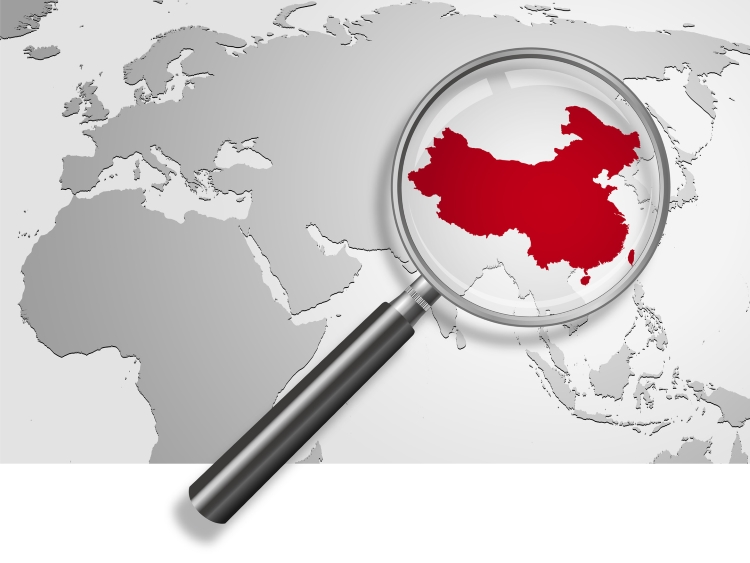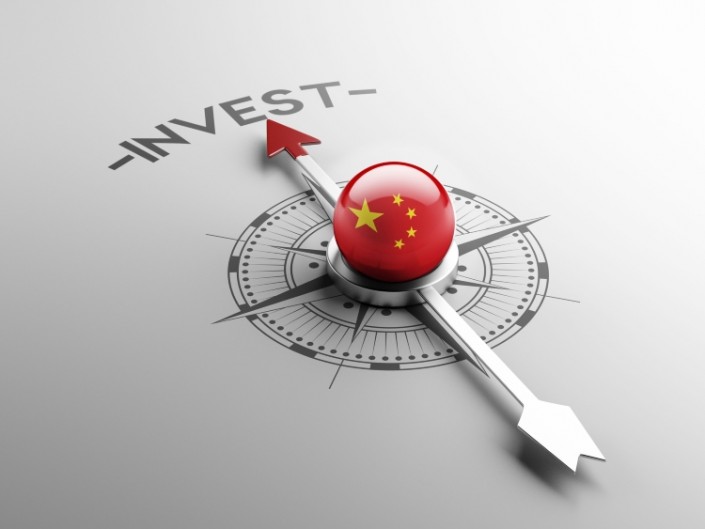Since turn of the century the VC and PE industry in China has undergone an unprecedented development. The market size already exceeds 100 billion USD per year. Yet many questions remain: What are the driving factors behind this explosive development? Where does the capital come from? Where are the limits for China’s PE and VC industry?
What is the Market Size of China’s VC and PE Industries and Where do they Invest?
Where does the VC and PE Investment Capital Come from?
What are the Main Funding Sources of Private Funds?
What are the driving factors for the development of the VC/PE industry in China? ?
What are the Factors Restricting the VC/PE Development?
What are the Forms of VC/PE Investment?
What are the Exit Strategies for the VC/PE Investor?
What is the Rate of Return of All Exit Strategies?
About the Authors
What is the Market Size of China’s VC and PE Industries and Where do they Invest?
The terms of venture capital and private equity were almost unheard of in China about twenty years ago. Now it has become a buzz word in the ordinary lives of Chinese people both in and outside business world. Since the start of this century, the VC and PE industry in China has undergone an unprecedented development. Today, the total market size (in terms of the total amount of investments made) has increased from about five hundred million USD in 2000 to about one hundred billion USD in 2016, second only to that of the United States. As the average size of early stage investments continues to increase and many PE funds choose to move into early stage investments to avoid heated competition in late stages, the line between traditional VC and PE investment become blurred today.
As to favored industries attracting most of the VC or PE funds, TMT and internet-related industries remains the number one for both VC and PE funds, representing more than 40% for VC investment and about one third for PE. Manufacturing and Minerals & Resources industries are the other two sectors attracting many PE funds, while VC funds make more investments in Medical & Health industry and Culture & Media industry.
Go to top
Where does the VC and PE Investment Capital Come from?
Given the so-called “VC or PE fever” in China in the recent years (now the fever has begun to cool down), money from almost every corner of Chinese society finds its way, directly or indirectly, into the VC/PE industries. The investors include both individual investors and institutional investors and fund come from both the state and local governments as well as the private sector. Individual investors can be further classified as professional angel investors, high net worth individuals and relatives and friends of founders. Institutional investors include investment companies (often the investment arms of big state-owned enterprises (SOE) or private technology giants), public companies, private equity funds, government guidance funds, the National Social Security fund and insurance capital, crowd funds and other capital from society.
Many technology companies (notably Baidu, Alibaba and Tencent, or “BAT”) have their own investment funds. They often hold a strategic minority shares in start-ups which either offer a huge potential or may be supplemental to BAT’s major lines of industries.
In the recent years it has also become fashionable for a public company to establish a fund together with a professional fund management company with a focus on an industry where the public company is often a market leader. Under this arrangement, the public company will provide most of the funding or at least a lion share of the funding. A public company’s ability to raise money from capital markets plus its deep industry knowledge combined with the management and investment skills of professional managers are the perceived advantages of those funds.
The government guidance funds usually do not directly engage in investment in a particular project. Instead, they often take the form of “fund of fund” (FOF) investing into private or public-private mixture funds focusing on strategic industries such AI, robotics, virtual reality or 3D printing. The main purpose of government guidance funds is to promote local economic development in strategic industries by attracting more investments in their localities through their own investments.
Given the sheer sizes of the National Social Security Fund and the insurance capital held by the big Chinese insurance companies, they also begin to play a significant role in the industry, though they are still facing many restrictions preventing them from playing a more active role in the industry.
Go to top
What are the Main Funding Sources of Private Funds?
According to the data provided by CV Source and Noah Research, individual investors are a significant funding source in China. Most of the passive investors participate in VC or PE investments as LPs. Among all types of sources, rich families and individuals account for 49% of the total capital contributed by LPs in 2016, ranking number one among all types of investors. Investment companies account for 10%, listed companies account for 5% and governments at all levels account for 3% of the total LP capital.
According to the data of CV Source and Noah Research, government guidance funds also play a very important role in the VC/PE industry. The total number of the government guidance funds has reached 901 and their total capital amounts to RMB2,396.66 billion.
Insurance capital has a promising future in the investment market. According to the CV Source and Noah Research data, the investments from insurance capital in private equity funds have amounted to RMB198.6 billion and the number of the funds invested are more than 70.
Go to top
What are the driving factors for the development of the VC/PE industry in China?
i. Increasing Capital from High Net-worth Chinese Families
With the rapid economic development in the past three decades, China now has about two million families that have a disposable cash of more than one million US dollars for investment. This number is likely to increase to 3.5 million by 2020.
ii. Lack of Alternative Investment Channels
With the continuous drop of the risk-free interest rates of Chinese banks and lack of attraction of a limited number of financial products provided by banks, high net worth individuals and families and companies with surplus funds are increasingly looking to VC/PE funds as a way of maintain and creating wealth. The Chinese stock market has always been famous for its immaturity and turbulent fluctuation which many prudent investors choose to avoid.
iii. Upgrading of Chinese Industries and Reform of SOEs
China’s economy has undergone a transition from labor-intensive and low-end manufacturing to a high-end and innovation-driven economy, i.e., from “Made in China” to “Created in China”. In this process many new industries and investment opportunities will emerge. In addition, the ongoing reform of the SOEs which emphasizes introduction of private capital into SOEs also brings more opportunities for VC/PE investment.
iv. Slow but Steady Improvement of Capital Markets
Though Chinese IPO markets as one of the major exit channels for VC/PE investment are far from satisfactory, a slow but steady improvement in the regulations of Chinese capital market is encouraging and welcomed by the VC/PE industry. The annual government report in 2017 puts much emphasis on the importance of developing multi-level capital markets in China.
v. Favorable Tax Policies
Local Chinese governments have long been experimenting with various preferential tax arrangements and other favorable policies to attract VC/PE funds to register and pay tax in their localities. As a recent development on the state level, the Notice on the Pilot Taxation Policies for Venture Capital Firms and Individual Angel Investors expressly stipulates that companies and individual angel investors engaging in VC/PE investment may deduct their investments from their taxable income under certain conditions.
Go to top
What are the Factors Restricting the VC/PE Development?
i. Restrictions on Foreign Investment in Certain Key Industries
For the purpose of regulating foreign investment, all industries are classified as encouraged industries, permitted industries, restricted industries and prohibited industries under Chinese laws. There are substantial restrictions on foreign capital investment in those restricted or prohibited industries including many important fields in TMT. In order to cope with such restrictions or prohibitions, the Variable Interest Entity (“VIE”) structure was developed by foreign investors. Though many China-based high-tech companies, such as Sina, Baidu and Tencent, received their early stage financing under the VIE structure, the legality of such structure has always been in dispute. In addition, a Chinese company receiving foreign investment under a VIE structure can hardly be approved to list in a Chinese stock market. All these factors constitue substantial obstacles for foreign investment to participate in China’s rapidly-growing VC/PE market.
ii. Exit Channels still Limited and Uncertain
As discussed below, a successful IPO is still the most preferred channel for the majority of the VC/PE funds in China. However, the approval process of the China Securities Regulatory Commission (CSRC) is painfully slow and inefficient. Many otherwise qualified Chinese companies have to wait up to two or three years to be formally reviewed by CSRC. Moreover, the qualification requirements are often subject to short-term policy concerns which result in the approval process not only being lengthy but also unpredictable. As a result, many Chinese companies have to look for alternatives to gain access to capital market such as an overseas listing or a “backdoor” listing by acquiring an under-performing public company as a shell. All these alternatives add additional costs and uncertainty for investors.
Go to top
What are the Forms of VC/PE Investment?
The forms of the VC/PE investment can be summarized mainly as equity investment, debt investment and convertible debt investment. Among all these forms of investment, equity investment plays a dominant role in all types of investments, especially for VC investment and other early stage investment. Convertible debt investments are often used in conjunction with equity investments. In China convertible debts are often provided as a “bridge loan” where a startup is badly in need of funding, but restructuring of its existing company and closing of equity investment may take months to complete. Another scenario is when a VC/PE makes both equity investment and convertible debt investment. Under such circumstances, the convertible debt is usually supplemental to equity investment and often converted into equity in the next round of financing. Debt investments are traditionally uncommon in the VC/PE industry as most of the target companies are unable to produce a stable cash flow to justify a debt financing. In the recent years, the role of debt financing has become more and more important, especially in the late stage PE financing where the requirements for funding are large and target companies are financially in a relatively healthy and stable state. In China debt financing often comes in a special form of preferred shares – normally regarded as equity – but here often with a guaranteed fixed return with no or very little upside potential which is closer to debt financing in substance.
Go to top
What are the Exit Strategies for the VC/PE Investor?
The exit strategies for the VC/PE investors include IPO, merger and acquisition (“M&A”), equity transfer, redemption and liquidation.
i. IPO
Most VC/PE investors in the PRC prefer to exit their investments via A-share IPO, i.e. listing on the Main Board, Growth Enterprise market (“GEM”) – especially after the birth of the GEM in 2009 – and Small Medium Enterprise Board (“SME”). However, the IPO has been proven to be an unreliable channel. For example, the exit of VC/PE investors via A-share IPO came to a complete stop during 2012 to 2013 due to a temporary suspension of all A-share IPOs. According to the data platform PEdata, in 2016 there were 551 transactions where the investors exited via A-share IPO, accounting for 11% of all the exit transactions. With the deepening of the reform of the multi-level capital market, exit via listing in National Equities Exchange and Quotations (“NEEQ”) increased in 2014-2015 and became an important exit channel. According to PEdata, in 2016 there were 3,232 transactions where investors exit via listing in NEEQ, accounting for 66% of all the exit deals, which ranks first in number. Compared to a traditional A-share IPO, a listing in NEEQ is more flexible in its requirements, has a much shorter waiting time and cost are substantially lower. However, the market liquidity and stock prices in NEEQ are also much lower than those of the A-share market which makes NEEQ listing an acceptable but not an ideal exit channel for investors.
ii. Merger and Acquisition
Despite all their shortcomings of the A-share markets in Shanghai and Shenzhen, they do have an important advantage: their price to earnings ratios (often in a range of 25 to 45) are much higher than any major capital market in the world. As such, M&A is often the second choice of the investors when the A-share markets are too weak or where an IPO is not a realistic option for a company in question. According to PEdata, in 2016 there were 325 transactions where the investors exited via M&A, accounting for 7% of all the exit transactions.
iii. Equity Transfer
In China it is also quite common for a VC/PE investor transfer its shares to another financial or strategic investors after holding the shares for certain time where an IPO or an M & A is not on the horizon. According to PEdata, there are 489 transactions in China where the investors exit via equity transfer accounting for 10% of all the exit transactions.
iv. Redemption
Redemption includes management buy-outs (“MBO”), redemption by shareholders and the redemption by target company. Though many VC/PE financing documents in China include a redemption clause, redemption is usually a less-favored and seldom implemented exit strategy. According to PEdata, in 2016 there were only 18 transactions where investors exited via redemption by shareholders, and 80 transactions where investors exit via MBO.
v. Liquidation
For obvious reasons, liquidation is the least favored one for VC/PE investors which often means a substantial loss for investors. According to PEdata, in 2016 there were only 10 transactions where the investors exit via liquidation.
Go to top
What is the Rate of Return of All Exit Strategies?
According to the PEdata, by the end of 2016, the average internal rate of return (“IRR”) of the investments exiting via A-share IPO was 42.8%, and the average multiple of return on investment (“MRI”) was 2.01, which is much higher than those of other exit strategies. The average IRR of the investments exiting via M&A is 19.6%, and that of MRI is 1.57. The IRR of equity transfer, redemption and MBO are 16.2%, 10.4% and 10% respectively. The MRI are 1.5, 1.24 and 1.28.
It is noteworthy that the investment returns of the A-share IPO are in decline and those of M&A are increasing in the past five years. The main reason is that the heated competition among many newly-formed funds has driven up the valuations of companies. As a result, the margins of the prices between late stage investments and secondary markets have shrank substantially.
Go to top
 Mr. Hongchuan LIU is Partner at Broad & Bright in China. His areas of expertise include foreign direct investment (FDI), M&A, VC/PE, capital market, corporate and commercial, outbound investment and international arbitration. He has advised renowned international enterprises on their FDI, M&A and related activities in China. He was recognized as a China Leading Lawyer in Capital Markets, M&A and Private Equity fields by IFLR1000 in 2015, 2016, and 2017. He was also recognized as one of China’s Leading Lawyers in Corporate and M&A, Capital Markets and Private Equity & Venture Capital fields by Legal 500, China Law & Practice and Asialaw. He has been a member of the HLS Leadership Council of Asia since January 2015.
Mr. Hongchuan LIU is Partner at Broad & Bright in China. His areas of expertise include foreign direct investment (FDI), M&A, VC/PE, capital market, corporate and commercial, outbound investment and international arbitration. He has advised renowned international enterprises on their FDI, M&A and related activities in China. He was recognized as a China Leading Lawyer in Capital Markets, M&A and Private Equity fields by IFLR1000 in 2015, 2016, and 2017. He was also recognized as one of China’s Leading Lawyers in Corporate and M&A, Capital Markets and Private Equity & Venture Capital fields by Legal 500, China Law & Practice and Asialaw. He has been a member of the HLS Leadership Council of Asia since January 2015.
 Mr. Dirk Voges, LL.M.,is partner at Weitnauer Attorneys since 2017. He advises national and international clients in legal questions of national and international energy projects- as well as the corporate law, capital market law and the German transformation act. In addition, Mr. Voges supports German companies at their entry into the Chinese Market as well as Chinese companies with their outbound business. He has experience in advising Chinese clients since 2006 and has been working as a General Counsel Europe for a Chinese company for four years before joining Weitnauer Attorneys.
Mr. Dirk Voges, LL.M.,is partner at Weitnauer Attorneys since 2017. He advises national and international clients in legal questions of national and international energy projects- as well as the corporate law, capital market law and the German transformation act. In addition, Mr. Voges supports German companies at their entry into the Chinese Market as well as Chinese companies with their outbound business. He has experience in advising Chinese clients since 2006 and has been working as a General Counsel Europe for a Chinese company for four years before joining Weitnauer Attorneys.
Go to top
Dieser Post ist auch verfügbar auf: Vereinfachtes Chinesisch






